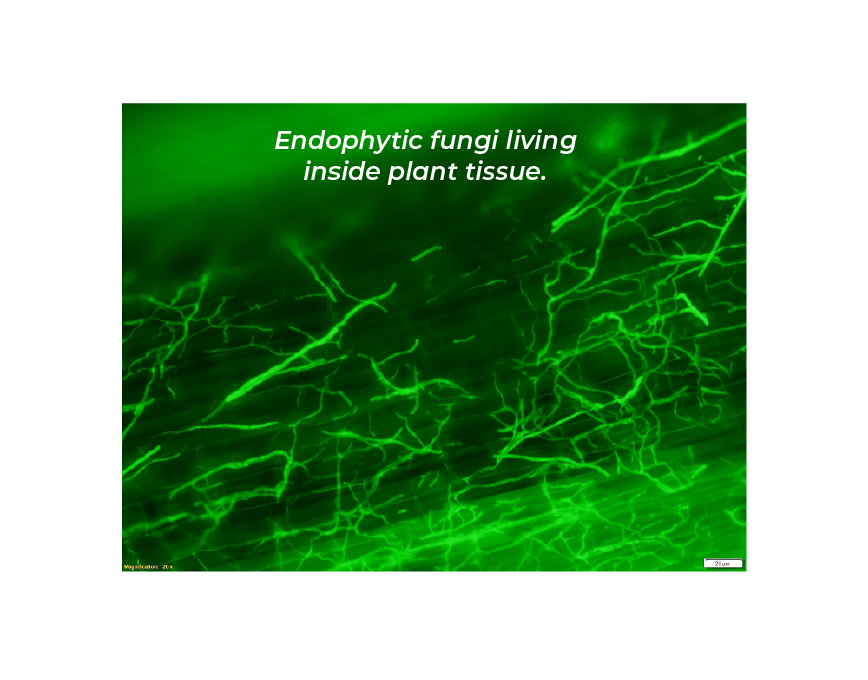It's happening around us and in us all the time; in our forests, in our oceans, and in our bodies. It's one of the most ubiquitous exchanges on the planet and we are just starting to understand it.
So what is symbiosis?
Scientists define symbiosis as the relationship between two distinct species that benefits either one, or both species. Those benefits can be nutrition, protection, locomotion, shelter and/or reproduction. Symbiosis includes a fascinating mix of diverse species interactions that are integral to life on earth.

How is BioArmor Symbiotic?
BioArmor is comprised of a dynamic fungus that lives most of its' life inside a host plant. When the plant dies the fungus makes its' way to the surface of the plant to reproduce. There it sporulates, creating new spore progeny. These fresh spores are then carried off by the elements and either fall onto nearby plants or onto the soil.
If the spores land on the soil they work their way down and wait for a chemical signal from surrounding plants. The fungus can then gain entry through the plants' root system and works its' way up into the plant. Here it supports the plant's metabolism, among other functions. This is where it will live out its' life until the plant dies, and then the life cycle starts anew.
This works out great for both species, the fungi get a place to live and the plants get a partner to help them manage environmental stresses. It's a mutually beneficial symbiosis!
There are three major types of symbiosis:
This classification is an interaction between two different species that benefits BOTH of them.
Example: Bees and flowers are mutually dependent on one another. The bee gets nectar/food as it travels from flower to flower and unknowingly becomes part of the flowers' reproductive cycle. It collects the flowers pollen on its wooly legs and transfers it to the next flower. The bee gets a meal, and enables cross-pollination between flowers thereby increasing genetic diversify. What a win!
This classification is an interaction between two different species where one organism benefits and the other is neither harmed nor does it benefit.
Example: Many orchids are called epiphytes (epi = upon, phyte = plant) because they live on other plants (typically trees) for support. They do not take anything from the trees, but rather ingest nutrients and water from surrounding air and surfaces. They get a place to live and the tree is unaffected by its’ presence.
For more examples of Commensalism check out this short video.
This classification occurs when one species benefits (the parasite) while the other (the host) is harmed.
Example: A tick (parasite) sucks the blood of a dog (host). The tick gets food and a warm place to live, the dog loses blood. This is typically just an annoyance to the dog unless the ticks occur in large numbers and overwhelm the dog’s system. Needless to say, it is in the best interest of the parasite not to compromise their host and their means to make a living!

